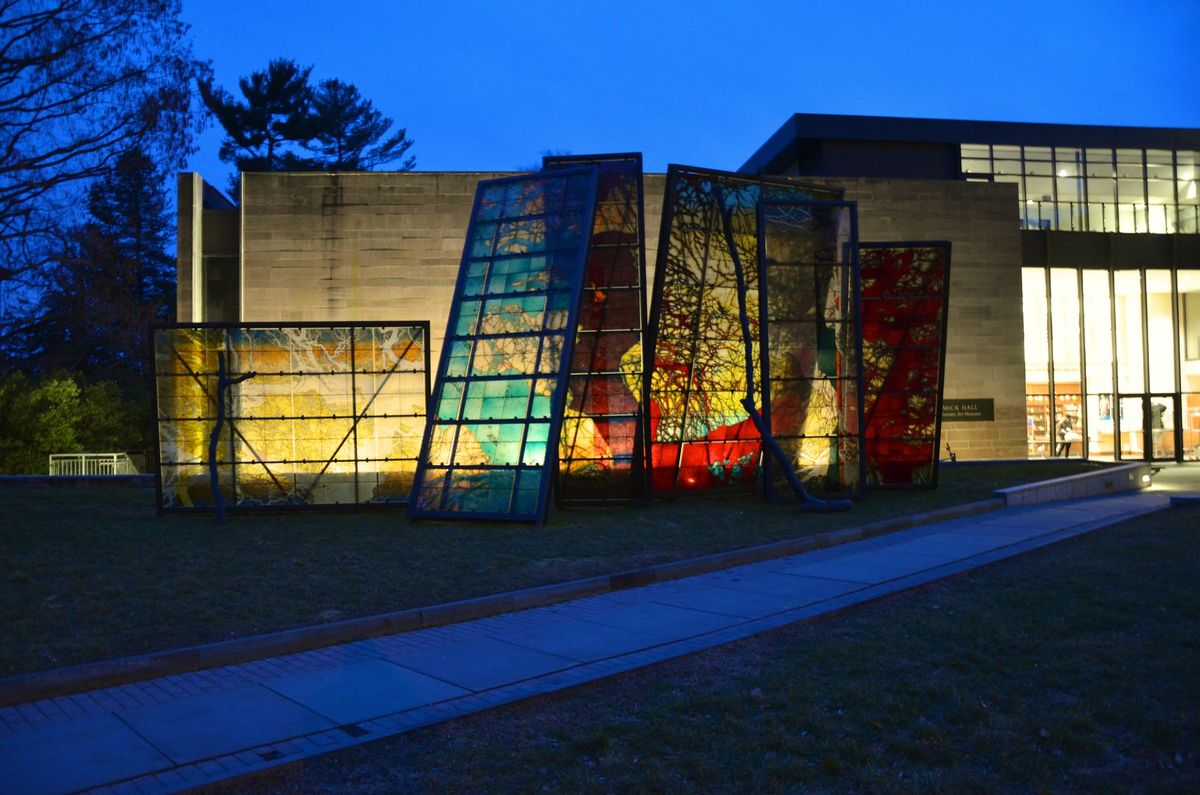The Princeton University Art Museum is one of the many prominent institutions tied to Almagià, who graduated from the university in 1973.
Joe Shlabotnik via Flickr under CC BY-NC-SA 2.0
Authorities in New York have obtained an arrest warrant for Edoardo Almagià , a prominent Italian antiquities dealer accused of trafficking tens of millions of dollars worth of Roman sculptures, Etruscan pottery and other valuable artworks and artifacts.
According to the New York Timesâ Colin Moynihan, who broke the story, the 80-page warrant accuses Almagià of illegally dealing thousands of objects. Many of these items were recorded in a ledger known as the âGreen Book,â a handwritten list of items that were allegedly purchased from tomb raiders.
The Manhattan district attorneyâs antiquities trafficking unit got access to snippets from the Green Book via an informant, who had tried to photocopy it. Almagià intervened, retrieving the ledger from the informant before the entire book could be copied.
However, the dealer missed one vital detail: Per the Times, he âstormed off without realizing that dozens of pages from the ledger had already been printed and were stacked in the photocopier tray.â Now, he has been charged with conspiracy, fraud and possessing stolen property.
Prosecutors say Edoardo Almagià kept a list of trafficked antiquities in his NYC apartment, hidden inside a Renaissance-era chest beneath a marble statue of a deer.
They also say he assaulted someone who found the list and started copying it at Kinko’s.https://t.co/UNVvChV9TI
— Colin Moynihan (@ColinRMoynihan) November 1, 2024
âThis is absolutely ridiculous. If they want to put me on trial, let them do it,â Almagià tells Katelynn Lee and Miriam Waldvogel of the Daily Princetonian, Princeton Universityâs student newspaper. âWe are getting to the point that whenever you touch an antiquity, you are a crook.â
Almagià graduated from Princeton in 1973. Since starting his career in the 1980s, he has worked with many renowned institutions and museums, including the J. Paul Getty Museum; the Fordham Museum of Greek, Roman and Etruscan Art; Bostonâs Museum of Fine Arts; the Cleveland Museum of Art; and the Princeton University Art Museum.
Almagià worked to âacquire antiquities stolen from Italy, market them as legal, display them openly in well-known institutions to increase their value, and then sell those antiquities for profit,â write prosecutors, per the Times.
Manhattan investigators began looking into the dealer in 2018. They have since seized more than 200 artworks connected to Almagià from many of the prominent institutions he worked with.
Almagià has had many other brushes with the law. In 2000, authorities stopped him at John F. Kennedy Airport for carrying two stolen Italian frescoes in his suitcase. Six years later, law enforcement officials searched the dealerâs apartment in Manhattanâs Upper East Side. He surrendered several items, but ultimately ended up fleeing to Italy, per Artnetâs Jo Lawson-Tancred.
âIf Almagià is the first name on your provenance, it is stolen. That is well known,â Matthew Bogdanos, the head of the Manhattan district attorneyâs antiquities trafficking unit, told Princeton Alumni Weeklyâs Rachel Axon last year.
He added, âThis guy got away with it for so long, and anyone who has any respect for the rule of law has got to say, âEnough.ââ
Almagià tells the Times that prosecutors are going too far, characterizing recent efforts to investigate illegal antiquities sales as âwitch hunts.â As for his charges, he adds, âI do not deny them but I do not accept them.â

